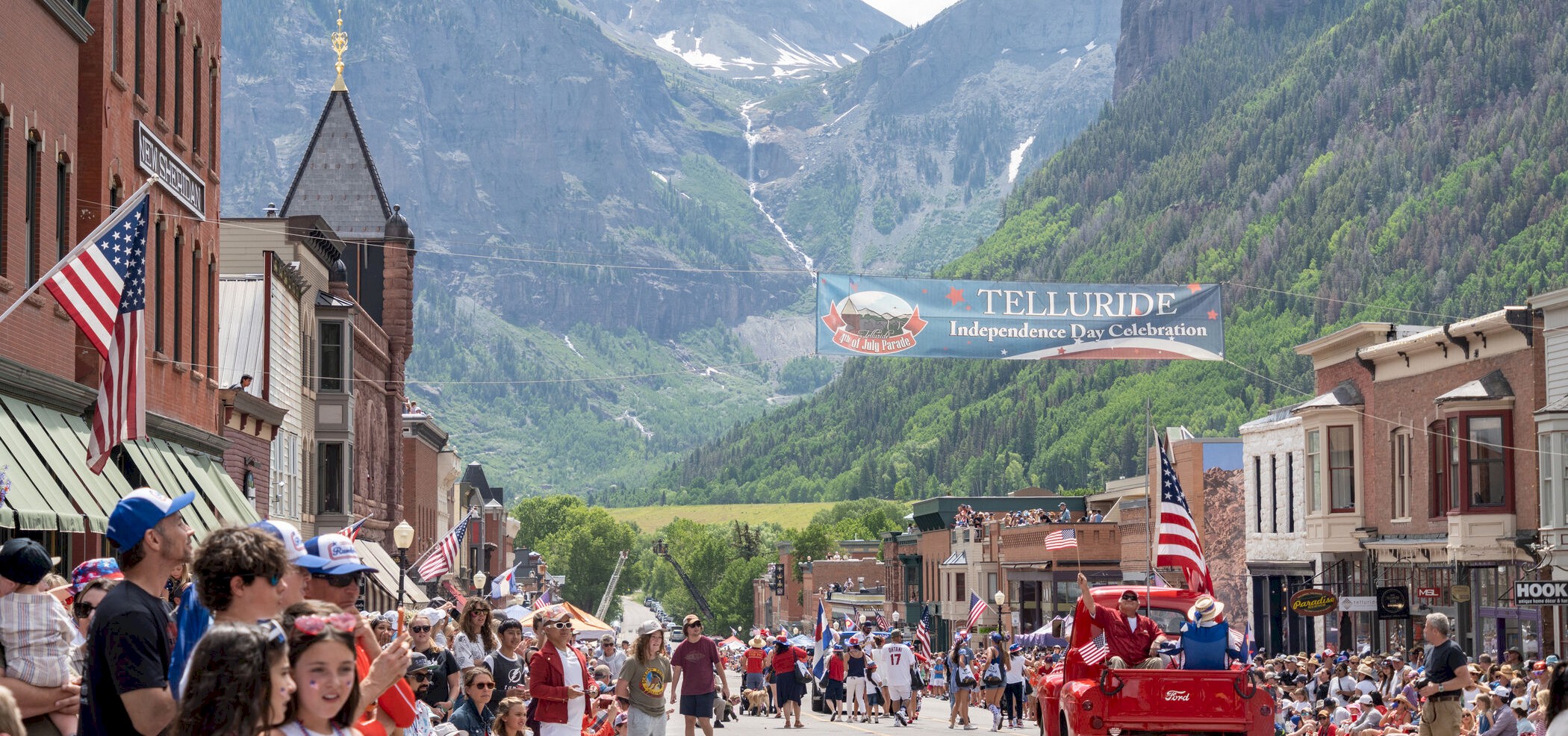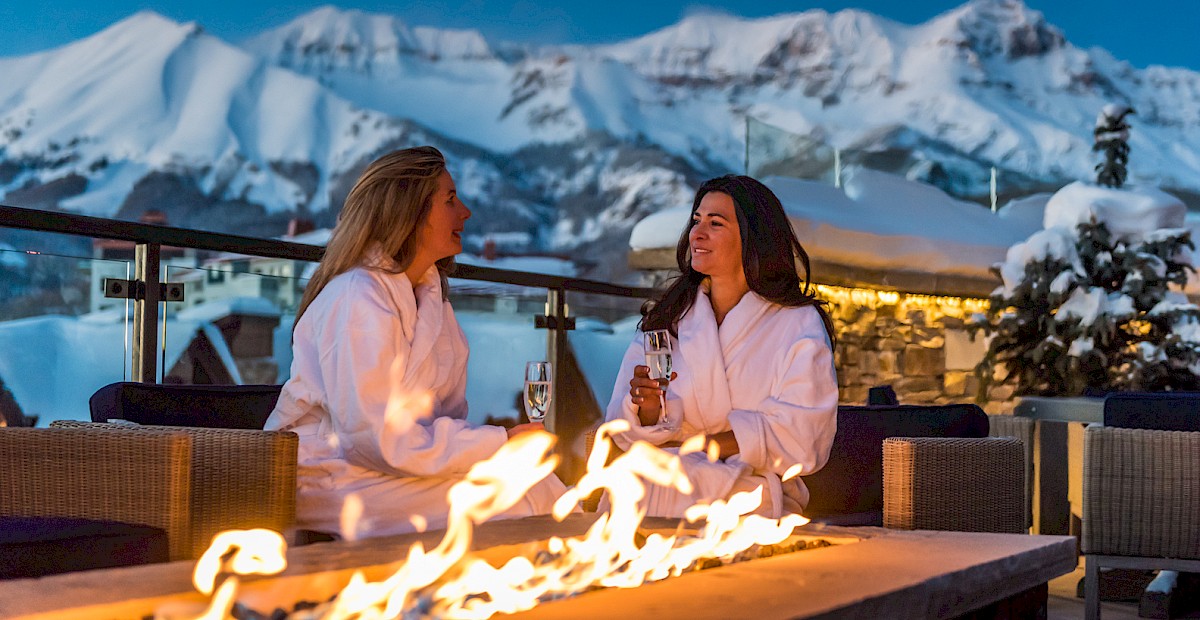Festive Fourth
By Emily Shoff
Back in Telluride’s mining days, there were few events more anticipated than the annual Fourth of July celebration. Other than Christmas Day, Independence Day and the days surrounding it were the only time the mines closed, so the community was ready to cut loose. On July 4, a dynamite blast sounded to mark the start of the day-long festivities and crowds cheered as horse-drawn floats and brass bands wound their way down the main street parade. In line with skills common in the mining era, drill and ore-loading and tug-of-war contests in the town park followed the parade.
“In many ways, Telluride’s July Fourth celebration was a homecoming of sorts,” explains Molly Daniel, curator of collections and exhibits at the Telluride Historical Museum, who put together a display on the Fourth of July in Telluride. “Everyone who used to work in the mine or in the town returned for the event. It was a time to get together with friends and party.”
And what a party it was. Preparations started on July 3. The local fire department set the stage for the parade and the events to follow and cooked food for a barbecue. Then as soon as the sun rose, it was game-on. The next two days were filled with contests and races, dances and fireworks. A printed schedule from 1941 reveals the pace of such days, even in wartime: 10 a.m., band concert; 10:30, 50-yard dash; 10:45, bicycle race, and so on. Until nightfall, the day was filled with contests — everything from apple eating to bread slicing to pole climbing. When the sun set, the fireworks and dancing arrived. Laughs Daniel, “The funny thing was that, other than getting drunk, what miners wanted most was to prove their strength at mining. The day was filled with nail-driving, ore-loading and greased pole climbing contests.”
Telluride’s Fourth of July celebrations began in the 1880s and have run continuously with only two exceptions, according to Daniel. The most recent pause was during the Covid summer of 2020. In 1976, organizers also suspended the festivities for fear of biker gang violence. “It was a time of transition for the town,” Daniel says. “The miners were squaring off with the newer hippies. The Fourth of July celebration pause was almost a point of reckoning of who Telluride was going to become at that moment.”
Not only was the Fourth of July celebration a rip-roaring party, it also influenced Telluride’s future as a festival hub. The popularity of the Fall Creek Band’s concert that followed the 1973 parade ultimately transformed into the Telluride Bluegrass Festival.
These days, Telluride’s Fourth of July celebration continues to draw an impressive crowd of visitors and locals alike. According to the current president of the Fourth of July Committee, Susan Cramer, it’s still one of Telluride’s most loved events. “I never get tired of the day,” Cramer responds, when asked why she’s donated her time alongside others for the last 20-plus years, “I love everything about it: the flyover, the parade, the prizes afterwards. It’s always a miracle how it all comes together. A true celebration of our town.”
After Telluride’s famed Fourth of July parade, many head to the Telluride Historical Museum on North Fir Street for its annual root beer floats event, which begins after the parade and lasts as long as supplies do. For more on Telluride’s fascinating history, visit the museum, whose 2024-25 annual exhibit is titled You Are Here: Opportunity, Exploration and Endurance in the San Juan Mountains. The exhibit features rare and unique historical maps from the collection of a longtime local. Other ways to explore regional history include the museum’s historical walking and cemetery tours, its Hike into History outings and Fireside Chats. Visit telluridemuseum.org for more information, to support the museum and to delve into its trove of historical photos, which are available for purchase.


